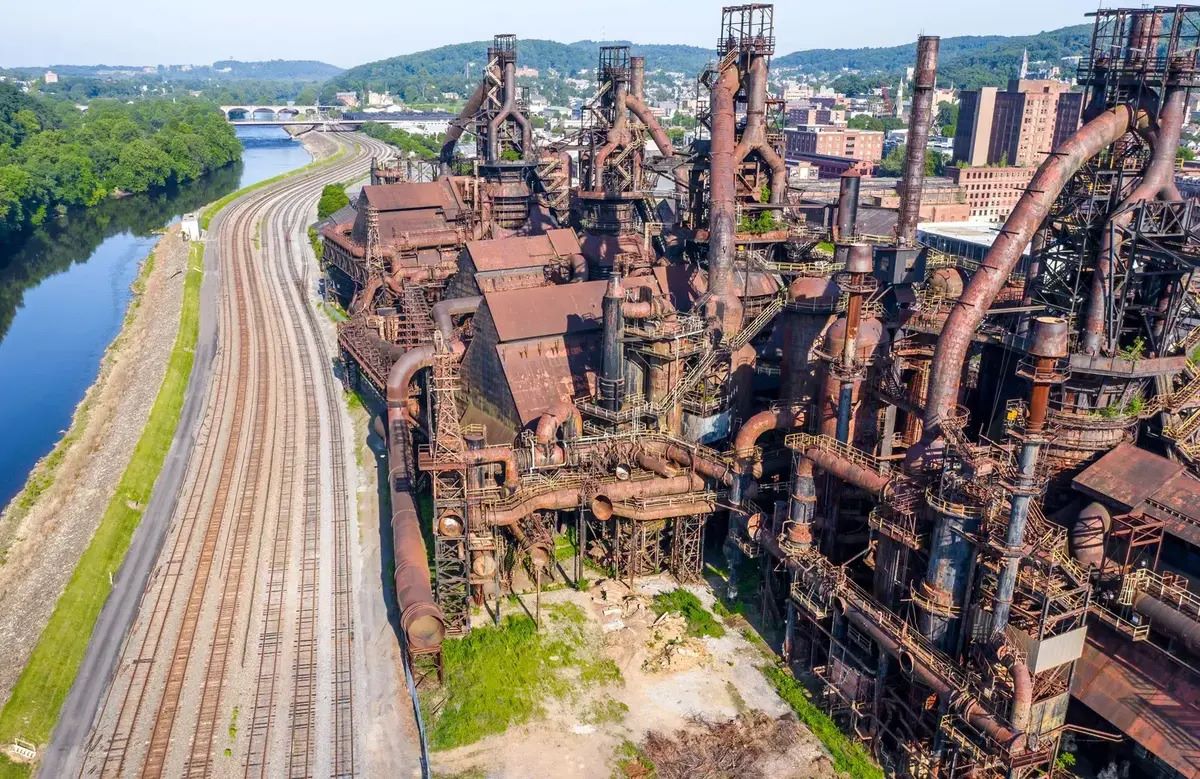Hidden Company Towns Of The Steel Belt

Ever wondered about the hidden gems of the Steel Belt? Company towns, once bustling with life, played a crucial role in America's industrial growth. These towns were built by steel companies to house workers and their families. They had everything from schools to stores, creating a close-knit community. Today, many of these towns have faded into obscurity, but their stories remain. Exploring these forgotten places offers a unique glimpse into the past. Imagine walking through streets where steelworkers once lived, worked, and built the backbone of the nation. Ready to learn more about these fascinating pieces of history? Let's dive in!
Hidden Company Towns of the Steel Belt
The Steel Belt, once the heart of American industry, is dotted with company towns that played crucial roles in the nation's development. These towns, often built by steel companies, housed workers and their families, creating tight-knit communities. Let's explore some of these hidden gems.
Braddock, Pennsylvania
Braddock, a small town near Pittsburgh, is steeped in history. It was home to Andrew Carnegie's first steel mill, the Edgar Thomson Steel Works, which still operates today.
- Edgar Thomson Steel Works – The mill that started it all for Carnegie, still producing steel after more than a century.
- Braddock Carnegie Library – The first Carnegie library in the U.S., a cultural hub for the community.
- Braddock's Battlefield History Center – A museum dedicated to the Battle of the Monongahela, a pivotal event in American history.
Homestead, Pennsylvania
Homestead, another Pittsburgh suburb, was the site of the infamous Homestead Strike of 1892. This town has a rich labor history and several notable landmarks.
- The Homestead Works – Once one of the largest steel mills in the world, now a shopping and entertainment complex.
- The Bost Building – Headquarters for the Amalgamated Association of Iron and Steel Workers during the strike, now a museum.
- Homestead Grays Bridge – Named after the famous Negro League baseball team, connecting Homestead to Pittsburgh.
Gary, Indiana
Gary, founded by U.S. Steel in 1906, was designed as a model company town. It quickly grew into a bustling city but faced decline as the steel industry waned.
- Gary Works – U.S. Steel's largest manufacturing plant, still in operation.
- City Methodist Church – An abandoned Gothic Revival church, now a popular spot for urban explorers.
- Michael Jackson's Childhood Home – The modest house where the King of Pop grew up, a must-see for fans.
Bethlehem, Pennsylvania
Bethlehem, home to Bethlehem Steel, was once the second-largest steel producer in the U.S. The town has reinvented itself while preserving its industrial heritage.
- Bethlehem Steel Plant – Now a cultural and entertainment complex called SteelStacks, featuring concerts, festivals, and more.
- National Museum of Industrial History – Located in a former Bethlehem Steel facility, showcasing America's industrial past.
- Hoover-Mason Trestle – A walkway offering views of the old steel plant and the Lehigh River.
Youngstown, Ohio
Youngstown, a key player in the steel industry, experienced significant economic challenges after the collapse of steel. However, it remains a city with a rich history and resilient spirit.
- Youngstown Historical Center of Industry and Labor – A museum dedicated to the region's industrial past.
- Lanterman's Mill – A restored 19th-century mill, now a picturesque spot in Mill Creek Park.
- The Butler Institute of American Art – The first museum dedicated solely to American art, featuring works from the colonial period to the present.
Weirton, West Virginia
Weirton, a town built by Weirton Steel Corporation, straddles the Ohio River and offers a glimpse into the life of a company town.
- Weirton Steel Works – Once the largest tin plate producer in the world, now part of ArcelorMittal.
- Weirton Area Museum and Cultural Center – Preserving the history and culture of Weirton and its steel industry.
- Brooke Hills Park – A recreational area offering hiking, fishing, and a glimpse of the region's natural beauty.
Johnstown, Pennsylvania
Johnstown, known for its steel production and devastating floods, has a rich history and several attractions worth visiting.
- Johnstown Inclined Plane – The world's steepest vehicular inclined plane, offering stunning views of the city.
- Johnstown Flood Museum – Telling the story of the catastrophic 1889 flood that reshaped the town.
- Heritage Discovery Center – Exploring the immigrant experience and the rise of the steel industry in Johnstown.
The Legacy of Steel Belt Company Towns
Steel Belt company towns hold a unique place in American history. These towns, built by steel companies, were more than just places to live. They were communities where workers and their families shared daily life. Many of these towns still exist, offering a glimpse into the past. Visiting these towns can be like stepping back in time. You can see old buildings, hear stories from locals, and feel the spirit of a bygone era. These towns remind us of the hard work and dedication that built America. They also show how much has changed over the years. Exploring these hidden gems can be a rewarding experience. It helps us appreciate the history and culture that shaped the Steel Belt. So next time you're in the area, take a moment to visit one of these towns. You might find a piece of history that speaks to you.

